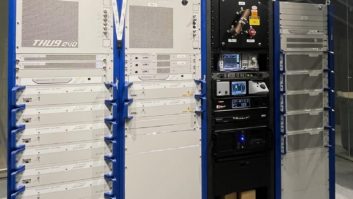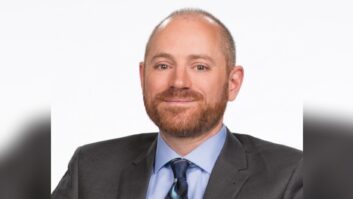
MUNICH — Since its founding in 1998, Munich-based broadcaster Bayern Digital Radio GmbH (BDR) has believed that its future depended on building an efficient network infrastructure for digital radio (DAB/DAB+).
As is the case with many small broadcasters, however, the transition from analog FM operation has proven challenging. The number of DAB listeners is still low and marketing efforts are only now gearing up.
To reach its largest possible audience, BDR needs to broadcast its programs via both DAB and FM. This means the increased use of energy, labor and maintenance costs. It also places an additional financial burden on program providers because they must create content for both formats.
THE CHALLENGE
The transition to digital is just as important for the audience as it is for broadcasters. Resources available via DAB+ networks make it possible to broadcast a large number of diverse programs for different target groups, thus boosting the appeal of the medium while raising public awareness of classic broadcast radio.
At the beginning of transition plans, it was quickly concluded that a two-pronged strategy was needed. First, it was necessary to obtain refinancing for additional infrastructure investment, and then to initiate a technology transition plan that would achieve the highest possible efficiency in operating costs.
Obtaining financial backing for the infrastructure expenditures was heavily dependent on convincing the financial partner that the new equipment would dramatically bring down BDR’s operating expenditures. The expense of operating a broadcasting business has many components. Among the most important are energy, maintenance, personnel and assuring that “on-air” time is maximized.
All cost factors tend to rise over time. But BDR’s operating costs — particularly its energy expenses — had been growing disproportionately. The company’s transition plan required that any new equipment (especially transmitters) should achieve the lowest possible energy consumption. BDR management also realized that optimizing the transmitter’s cooling system, in particular, would be a major contributor to energy savings.
The strategy for reducing maintenance costs was based on the fact that simplifying operating procedures reduces the frequency of repairs and that the need for specialized service personnel drops. In particular, it is desirable to minimize the number of times specialists are called in. This can be accomplished by purchasing equipment that allows on-site personnel to handle many problems.
Equipping transmitters with intelligent software is the best way to improve monitoring — both on-site and remotely. Having an integrated system also promotes failsafe performance, which further reduces repair costs.
THE SOLUTION
After identifying the major cost factors, BDR studied the range of broadcast high-power transmitters available and concluded that the new transmitter generation for DAB/DAB+ from Rohde & Schwarz (THV9) offered significant advances in energy efficiency, simplified maintenance procedures and proactive monitoring.
The R&S THV9 achieves an efficiency of up to 46 percent, including cooling, for COFDM standards, which allowed BDR to reduce its energy costs by more than 50 percent. Using less electricity also helps to reduce CO2 emissions and contributes to meeting climate protection goals.
Another decision point for BDR was the ease of servicing. The R&S THV9 has an advantage because it offers a multiband Doherty operating mode. In Doherty mode, the amplifiers can easily be optimized for different frequency ranges. Because they operate across the entire VHF band, provisioning of spare parts is simplified. Frequency changes that become necessary in case of rescheduling are also easy to program with Doherty operation.
BDR has implemented various cooling system concepts at its sites, ranging from individual and central cooling systems to cooling systems with heat exchangers. The multiplicity of control systems involved created an additional challenge. Choosing the R&S THV9 largely resolved this challenge, however, because it is the first transmitter that can be equipped with integrated cooling pumps that include the relevant control technology.
BDR is using the R&S THV9 transmitters in its service area at sites that provide primary coverage (main network transmitters). In such cases, the 1,300 W, 2,600 W and 3,900 W power classes are typically used.
With its newly equipped transmitter sites, BDR can simultaneously offer both better service to its audience, an attractive VHF-to-DAB/DAB+ transition strategy to its program providers, and significantly reduced operating costs for the company’s bottom line.
Johannes Sinnhuber is product manager transmitter and amplifier systems for Rohde & Schwarz.
For information, contact Rohde & Schwarz in Germany at +49-89-4129-0 or visit www.rohde-schwarz.com.












